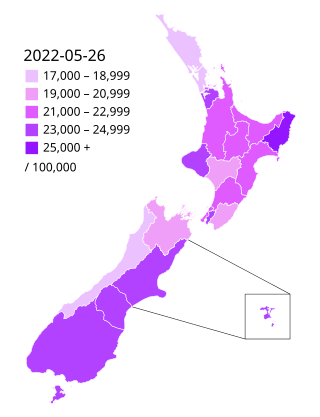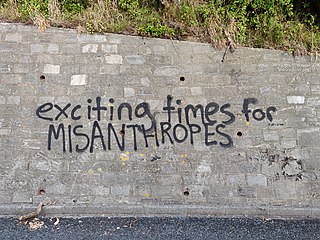
Domestic violence is violence or other abuse that occurs in a domestic setting, such as in a marriage or cohabitation. Domestic violence is often used as a synonym for intimate partner violence, which is committed by one of the people in an intimate relationship against the other person, and can take place in relationships or between former spouses or partners. In its broadest sense, domestic violence also involves violence against children, parents, or the elderly. It can assume multiple forms, including physical, verbal, emotional, economic, religious, reproductive, financial abuse, or sexual abuse. It can range from subtle, coercive forms to marital rape and other violent physical abuse, such as choking, beating, female genital mutilation, and acid throwing that may result in disfigurement or death, and includes the use of technology to harass, control, monitor, stalk or hack. Domestic murder includes stoning, bride burning, honor killing, and dowry death, which sometimes involves non-cohabitating family members. In 2015, the United Kingdom's Home Office widened the definition of domestic violence to include coercive control.
The following outline is provided as an overview of and topical guide to domestic violence:
Domestic violence is prominent in Nigeria as in other parts of Africa. There is a deep cultural belief in Nigeria that it is socially acceptable to hit a woman as a disciplinary measure. Cases of Domestic violence are on the high and show no signs of reduction in Nigeria, regardless of age, tribe, religion, or even social status. The CLEEN Foundation reports 1 in every 3 respondents admitting to being a victim of domestic violence. The survey also found a nationwide increase in domestic violence in the past 3 years from 21% in 2011 to 30% in 2013. A CLEEN Foundation's 2012 National Crime and Safety Survey demonstrated that 31% of the national sample confessed to being victims of domestic violence.
Violence against women in Pakistan, particularly intimate partner violence and sexual violence, is a major public health problem and a violation of women's human rights in Pakistan. Women in Pakistan mainly encounter violence by being forced into marriage, through workplace sexual harassment, domestic violence and by honour killings.
Domestic violence and abuse in the United Kingdom are a range of abusive behaviours that occur within relationships. Domestic violence or abuse can be physical, psychological, sexual, financial or emotional. In UK laws and legislation, the term "domestic abuse" is commonly used to encompass various forms of domestic violence. Some specific forms of domestic violence and abuse are criminal offences. Victims or those at risk of domestic abuse can also be provided with remedies and protection via civil law.

The COVID-19 pandemic has had far-reaching consequences beyond the spread of the disease itself and efforts to quarantine it, including political, cultural, and social implications.

The COVID-19 pandemic in New Zealand was part of the pandemic of coronavirus disease 2019 caused by severe acute respiratory syndrome coronavirus 2. The first case of the disease in New Zealand was reported on 28 February 2020. The country recorded over 2,274,370 cases. Over 3,000 people died as a result of the pandemic, with cases recorded in all twenty district health board (DHB) areas. The pandemic first peaked in early April 2020, with 89 new cases recorded per day and 929 active cases. Cases peaked again in October 2021 with 134 new cases reported on 22 October.

The COVID-19 pandemic in the Bailiwick of Guernsey was a part of the worldwide pandemic of coronavirus disease 2019 caused by severe acute respiratory syndrome coronavirus 2. The Bailiwick has been successful in limiting and preventing the spread of the virus through a rigorous system of testing, tracing and isolating suspected and confirmed cases and requiring arrivals to self-isolate for 14 days. The States of Guernsey co-ordinates the pandemic response which has been praised for its transparency and clarity and held up as an exemplar of good communication.

This article documents the chronology of the response to the COVID-19 pandemic in April 2020, which originated in Wuhan, China in December 2019. Some developments may become known or fully understood only in retrospect. Reporting on this pandemic began in December 2019.

COVID-19 affects men and women differently both in terms of the outcome of infection and the effect of the disease upon society. The mortality due to COVID-19 is higher in men. Slightly more men than women contract COVID with a ratio of 10:9.

Amid the COVID-19 pandemic, many countries have reported an increase in domestic violence and intimate partner violence. United Nations Secretary-General António Guterres, noting the "horrifying global surge", has called for a domestic violence "ceasefire". UN Women stated that COVID-19 created "conditions for abuse that are ideal for abusers because it forced people into lockdown" thus causing a "shadow pandemic" that exacerbated preexisting issues with domestic violence globally.

The COVID-19 pandemic has impacted crime and illicit economies such as organised crime, terrorism, street crime, online crime, illegal markets and smuggling, human and wildlife trafficking, slavery, robberies and burglaries.

This article documents the chronology of the response to the COVID-19 pandemic in May 2020, which originated in Wuhan, China in December 2019. Some developments may become known or fully understood only in retrospect. Reporting on this pandemic began in December 2019.
Guo Jing is a Chinese women's rights activist, feminist activist, social worker, and book author based in Wuhan, Hubei Province, People’s Republic of China. She is known for writing Wuhan Lockdown Diary, a diary she wrote during the COVID-19 pandemic in Wuhan, China. Her work has appeared in or has been covered by The New York Times, The New Yorker, The Guardian, and BBC News among others. Her book, Wuhan Lockdown Diary, was published in March 2020 by Taiwan Linking Publishing Company (台湾联经出版社).

A systematic review notes that children with COVID-19 have milder effects and better prognoses than adults. However, children are susceptible to "multisystem inflammatory syndrome in children" (MIS-C), a rare but life-threatening systemic illness involving persistent fever and extreme inflammation following exposure to the SARS-CoV-2 virus.
The 2020 COVID-19 pandemic in Argentina affected the human rights situation in the country.
This is a social history of the 2020s. Social history refers to changes affecting societies and the lived experiences of their members.

The New Zealand Government responded to the COVID-19 pandemic in New Zealand in various ways. In early February 2020, the Government imposed travel restrictions on China in response to the global COVID-19 pandemic originating in Wuhan and also repatriated citizens and residents from Wuhan. Following the country's first case which originated in Iran, the Government imposed travel restrictions on Iran.

The COVID-19 pandemic in New Zealand has had far-reaching consequences on the country that went beyond the spread of the disease itself and efforts to eliminate it, including education, faith communities, Māori, mass gatherings, sports, recreation, and travel. In addition, there were several recorded cases of lockdown violations, leaks, and misinformation about the COVID-19 virus and vaccines.
A distress hand signal is a hand signal to indicate distress and need of rescue.






